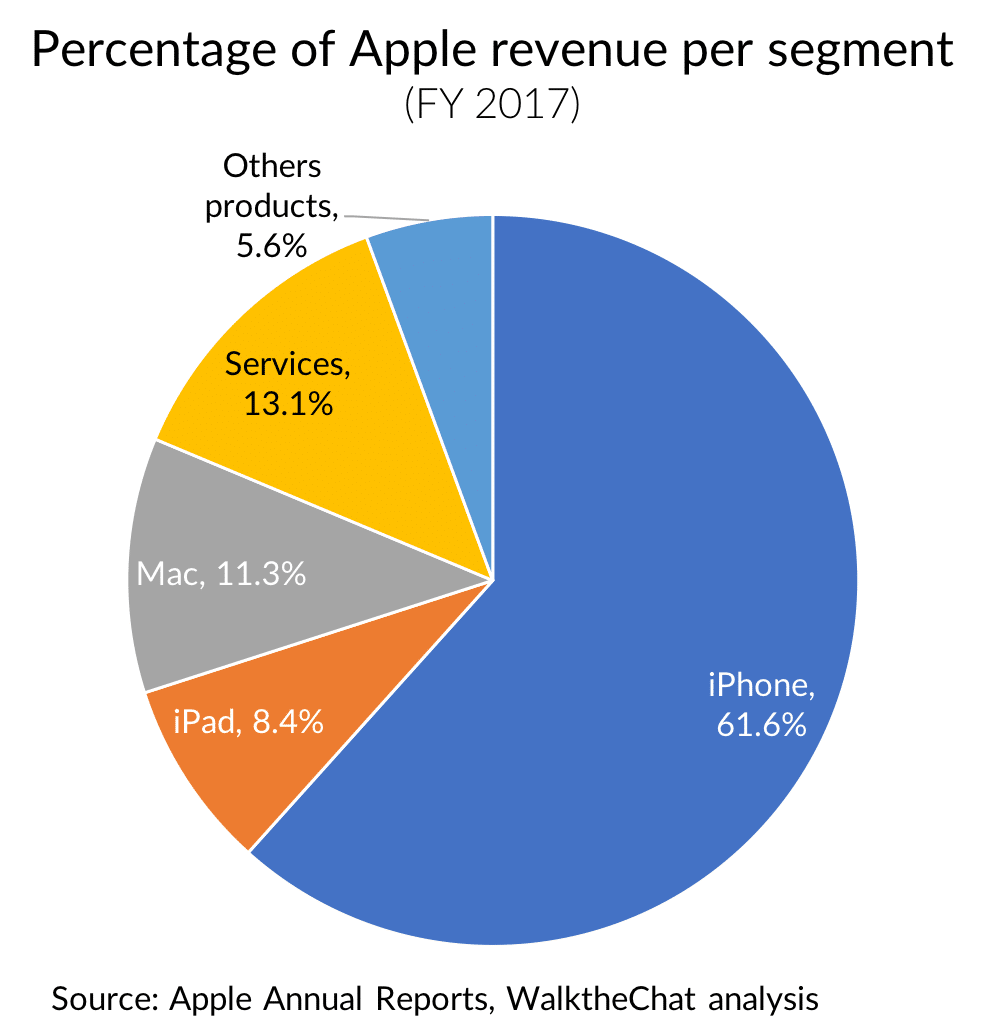Recently, Hong Kong’s securities regulator and market operator together enabled a reform of Hong Kong’s listing rules in order to ‘lure’ technology companies that wish to sell equity with multiple classes of stock, allowing founders to keep outsized voting rights.
Xiaomi was one of the first large technology company to have filed for IPO in Hong Kong Stock Exchange market on 9th July 2018 with an opening price of HK$16.6. According to a prospectus, Xiaomi will have 2.18 billion-share global IPO, with a maximum offer price of HK$22 per share.
Overview
Xiaomi is a Chinese electronics company founded in 2010 by Lei Jun. The company creates a wide range of products including hardware, software and Internet services. Xiaomi is already distributing its products in numerous countries such as Singapore, Philippines, India, and Brazil.
Xiaomi grew at a rather quick pace, already in 2012, Xiaomi generated more than 1 billion annual revenue and in 2017 it became the world’s largest IoT (Internet of Things) platform (in terms of the number of connecting devices).
Furthermore, its annual revenue has also been increasing at notable speed:
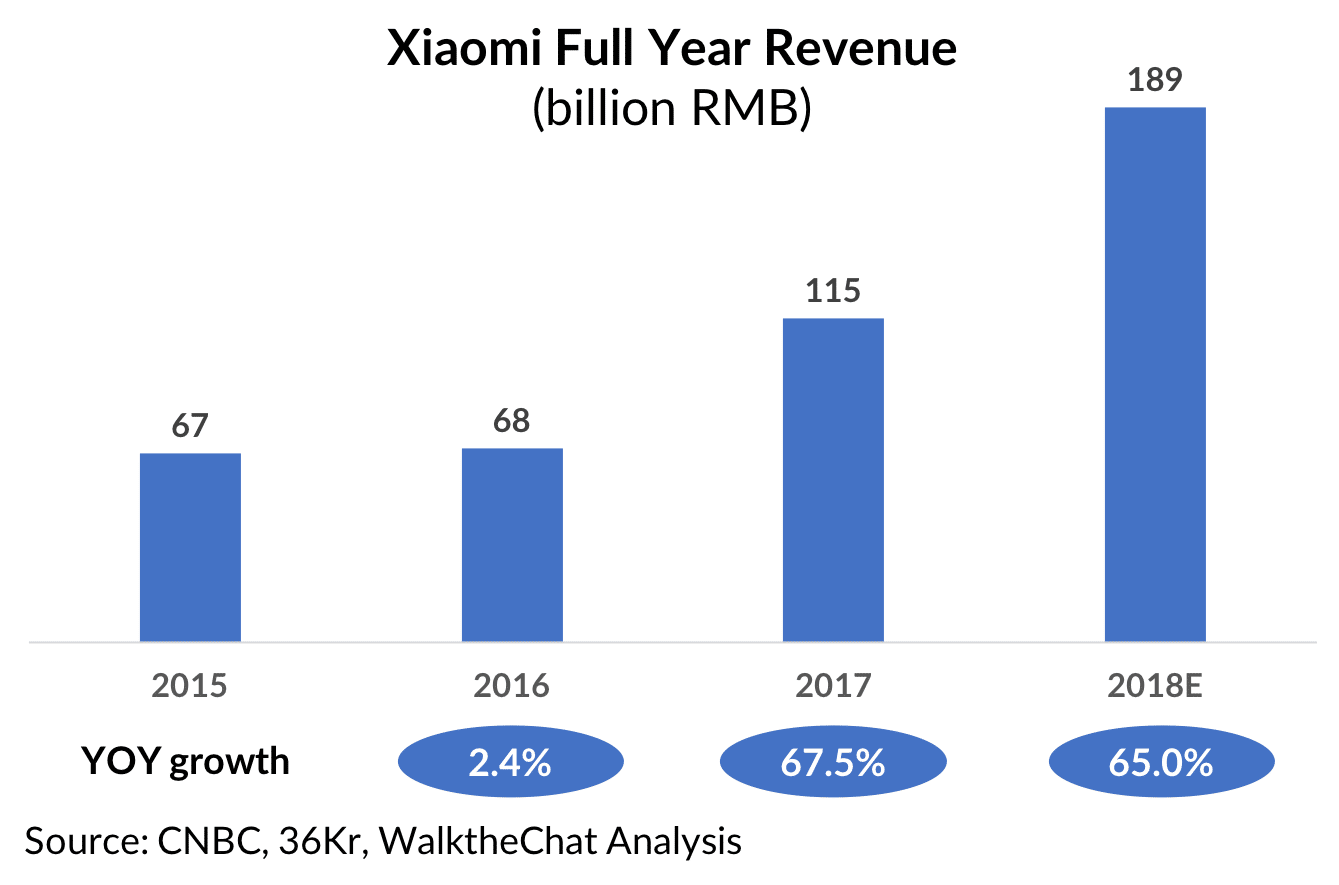
Despite the company’s meaningful growth in revenue over the past years, the company struggled in smartphones sell during 2015 and 2016: according to Lei Jun, the founder of Xiaomi, organizational problems and issues in the supply chain were at the source of the decrease in smartphones sales. This incident has even forced Xiaomi to retreat from several overseas markets.
This downfall can be noticed through the insignificant increase of revenue in 2016; however, Xiaomi has managed to rebound: revenue boomed by +67.5% in 2017.
Xiaomi’s Triathlon business model
Xiaomi has a particular business model, the company created an ecosystem of internet-connected home and tech products by partnering up with around one hundred start-ups. Xiaomi has often been criticized as an unfocused company that sells everything. But the strategy seems to work.
Xiaomi describes their business model as a triathlon model composed of: Hardware + Internet Services + New Retail
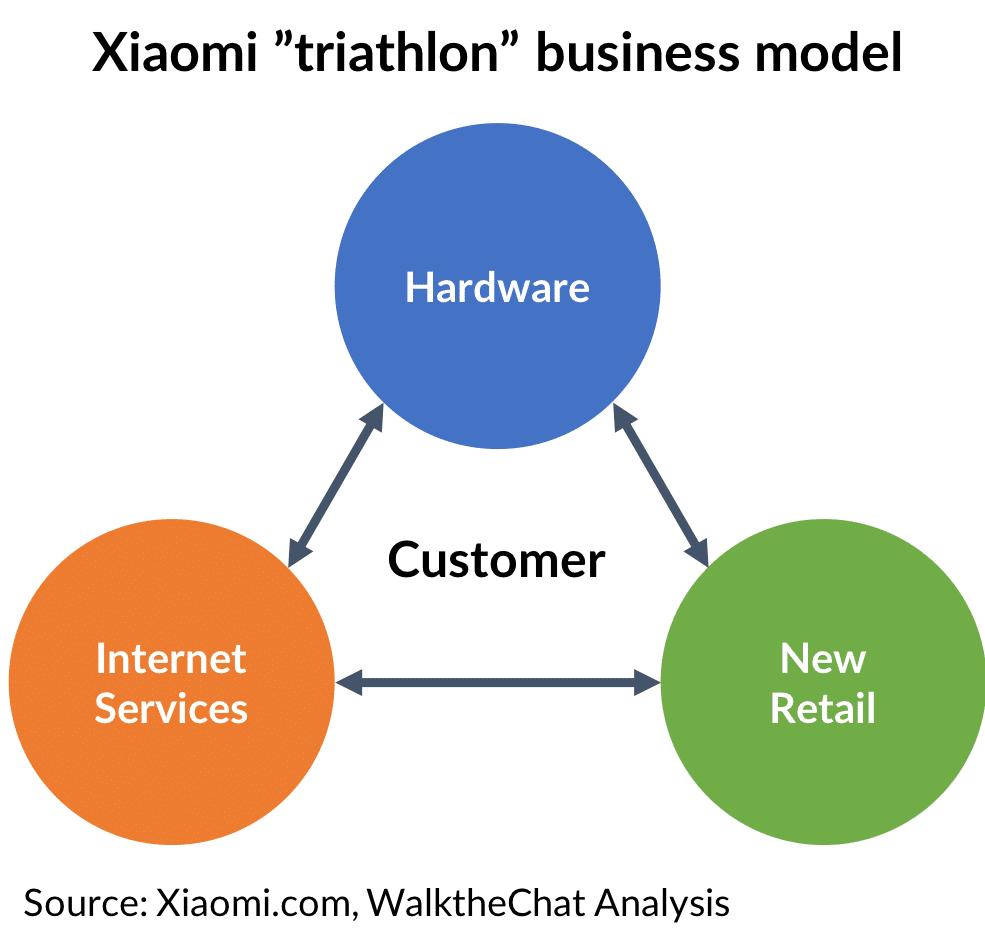
- Hardware: Innovative, high quality, well designed and customer experience focused hardware
- Internet Services: Abundant Internet services
- New Retail: Efficient new retail based on reasonable pricing
Three major business units were developed under this business model:
- Smartphones
- Internet of Things (IoT) and lifestyle products
- Internet Services
Despite the intention to reduce the reliance on smartphone sales, the smartphone business still generates most of Xiaomi’s revenue and accounts for 67.5% of the company’s total revenue in 2018 first quarter:
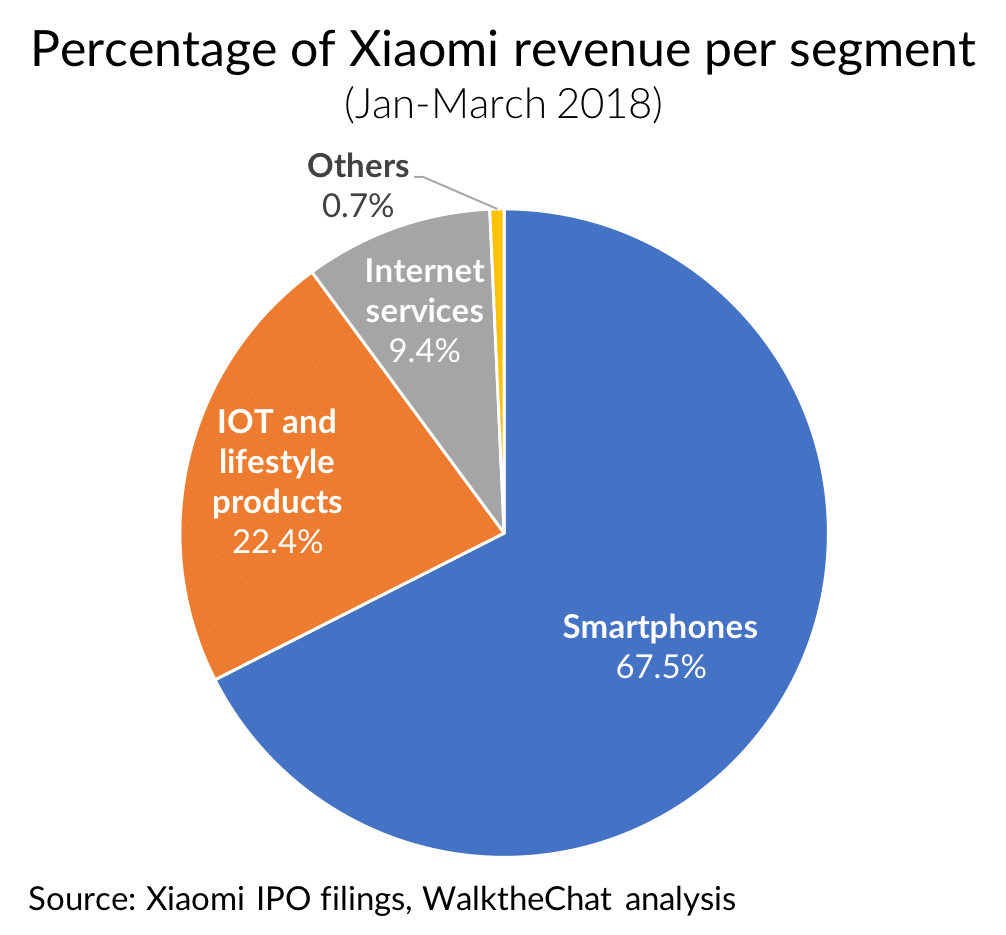
Xiaomi’s smartphone business is, however, becoming over the years a smaller and smaller contributor to Xiaomi’s revenue (from 80.4% of revenue to 67.5% between 2015 and 2018Q1) while Internet Services are growing (from 4.9% of revenue in 2015 to 9.4% in 2018Q1).
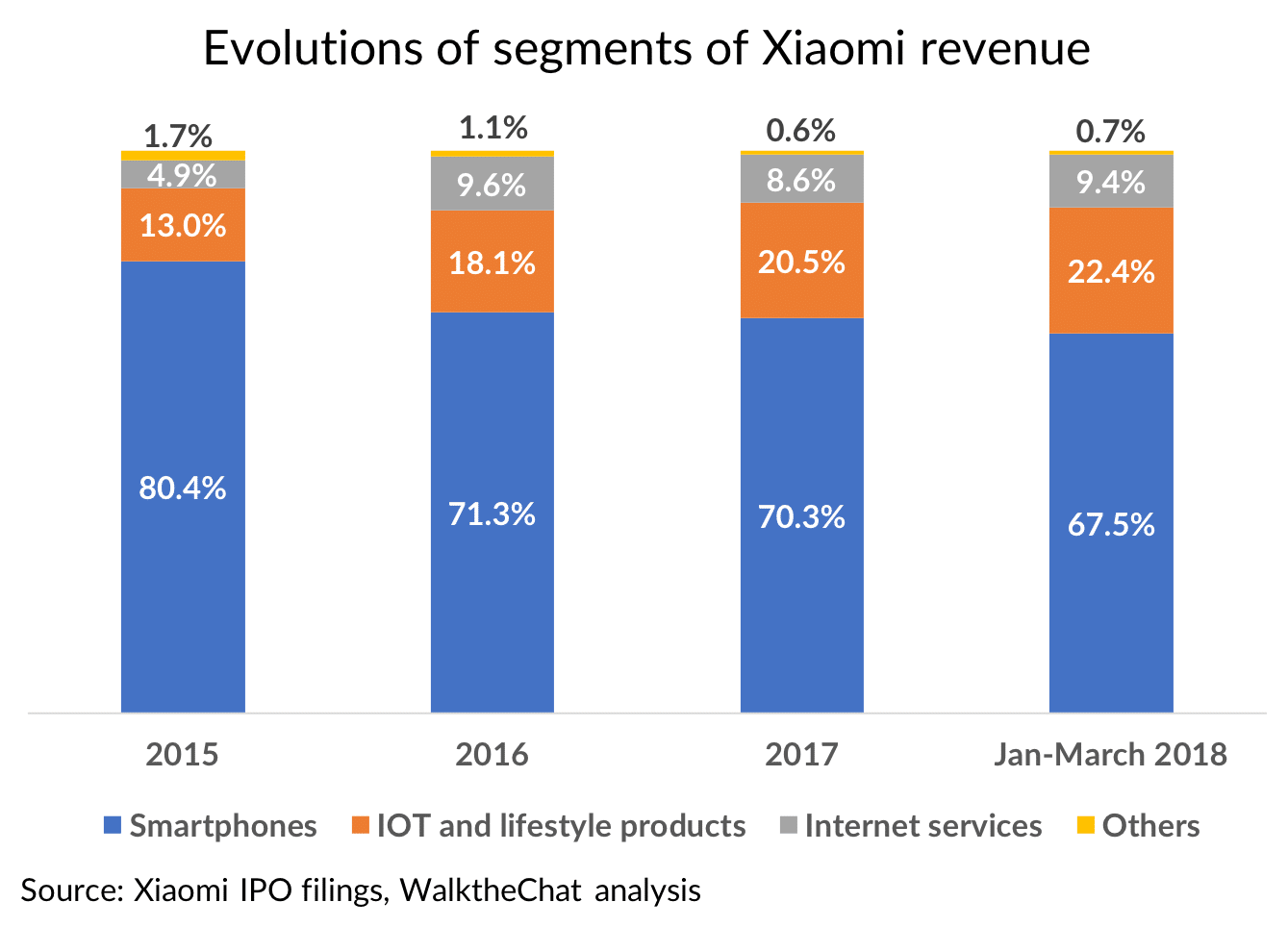
But is Xiaomi really that special in this regard? Lei Jun as repeatedly stated that Xiamo was closer to Amazon than to Apple: making money on services after selling affordable hardware.
The data, however, paints a different picture: although Xiaomi makes 9.4% of its revenue from Internet Services, the figure reached 13% for Apple in 2017.
Even in terms of smartphone sales, the iconic iPhone only makes up for 61.6% of Apple revenue: 6 points less than the contribution of smartphones to Xiaomi’s income.
Xiaomi’s performance in the domestic market
There are 4 main mobile phone vendors in China, together they accounted for 73% of the market share in the first quarter of 2018:
- Huawei: 21.2 million units, representing 24% of the market share
- OPPO: 16.5 million units, 19% of the market share
- Vivo: 14.2 million units, 17% of the market share
- Xiaomi: 13.2 million units, 13% of the market share
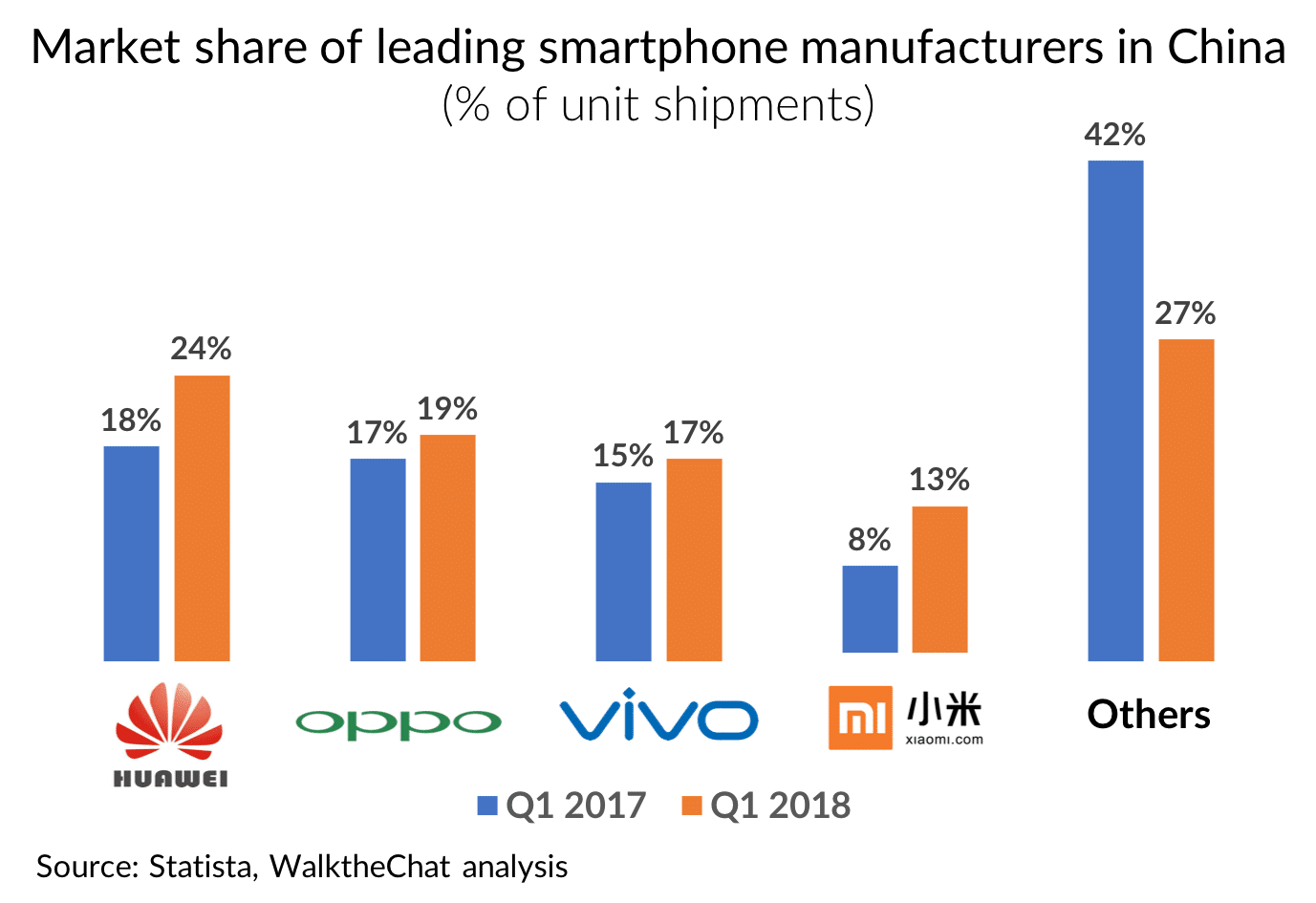
Although the market got more concentrated overall, Xiaomi saw one of the fastest increase, gaining 5 points of market share in 1 short year.
Xiaomi’s influence is not limited to China either. As already mentioned, Xiaomi has a clear intention to expand foreign market:
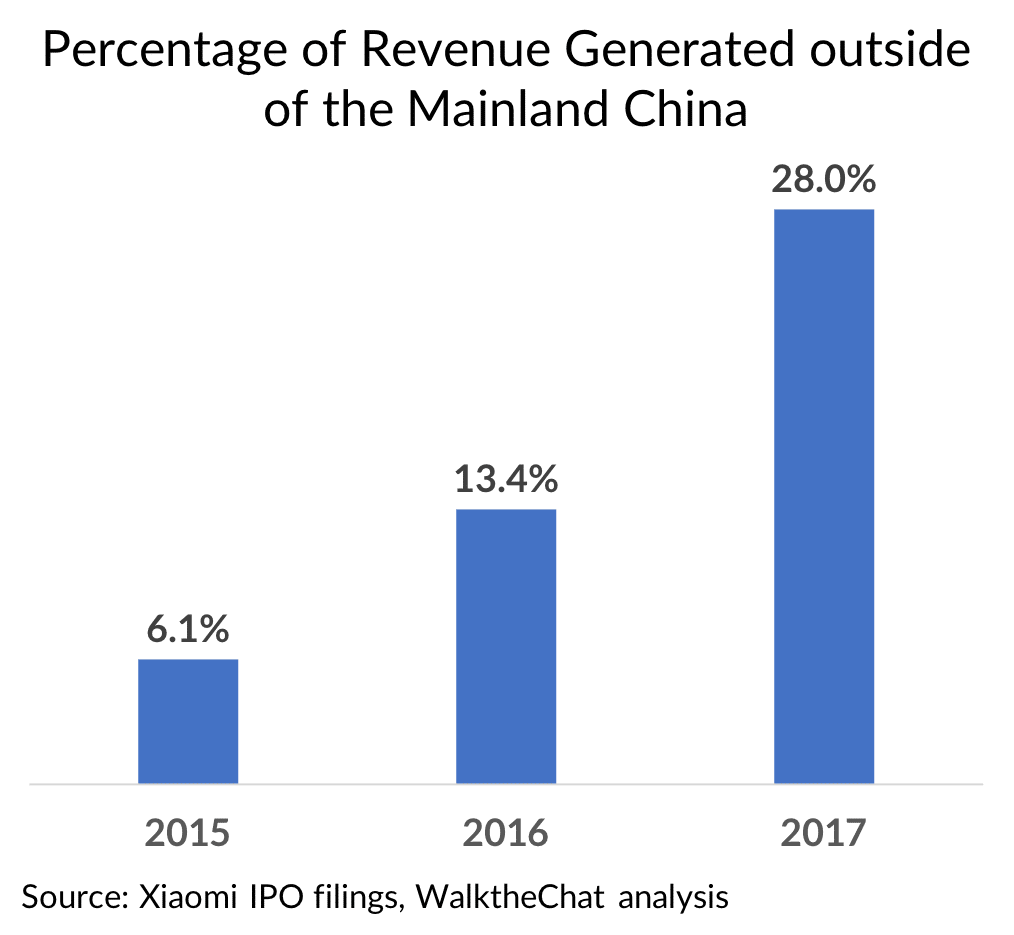
With 28% of its revenue coming from overseas markets and a share of oversea profits doubling every year, Xiaomi is well on its way to becoming a truly global company.
For example, India is one of Xiaomi’s strongest growth markets; in fact, the company led the Indian market by smartphone unit shipment in the fourth quarter 2017 accounting for 26.8% of the total market share.
Allocation of IPO raised according to the prospectus
According to Lei Jun, Xiaomi aims to deepen Internet services, enlarge popular products categories, maintain efficiency, invest in expanding its ecosystem and further expand the “global Triathlon” business model.
Based on Xiaomi’s prospectus, the IPO raised will be mainly used for the following purposes:
- Investment in in-house products research and development, including smartphones, smart TVs, laptops, AI speakers and smart routers
- Investment in ecosystem expansion, especially in IoT and lifestyle products
- Investment to expand global influence
- Reserve for working capital and general corporate purposes
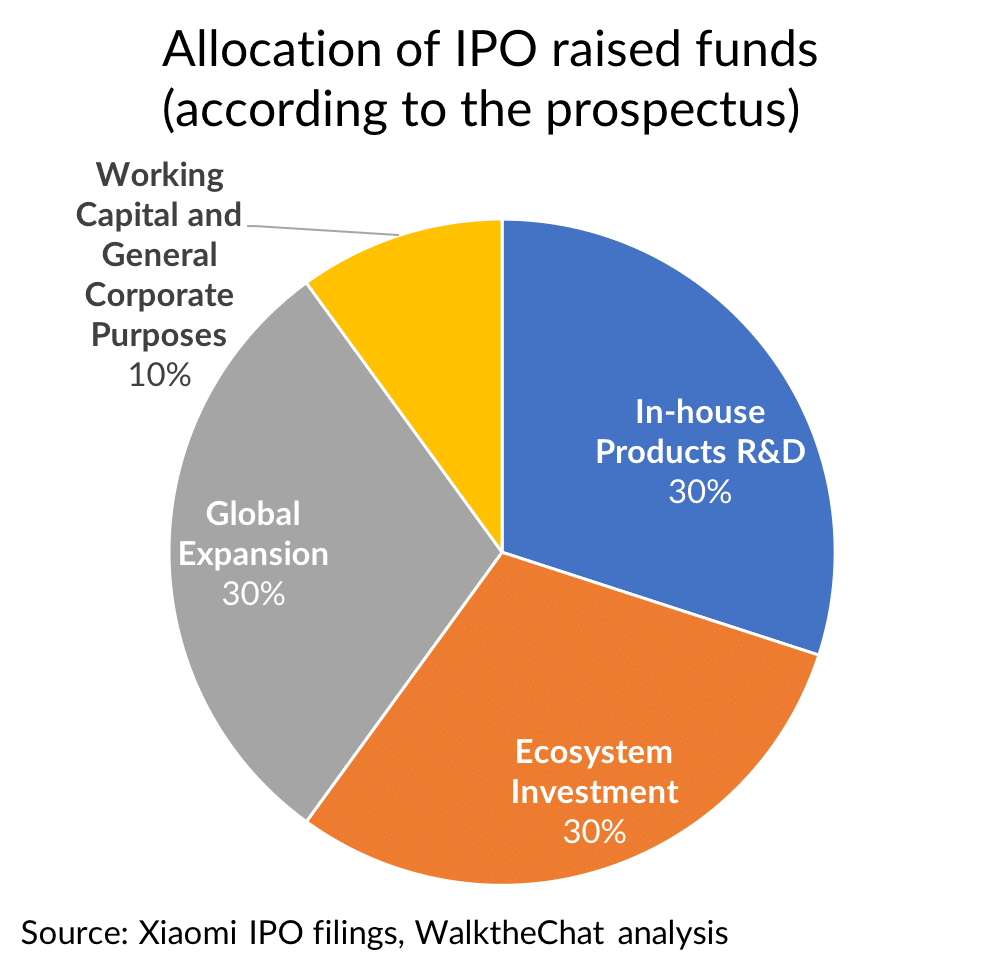
Risks
Xiaomi’s also laid out the potential risks that the company will be facing; the main ones are:
- Risk of over-reliance on smartphone sales: Xiaomi’s revenue is largely dependent on smartphones sales, therefore a decrease in sales or an increase in the cost of making smartphones could materially and adversely affect the business. This is a particular concern as the Chinese market is getting saturated in terms of new smartphone users.
- Risk of replication and replacement: Xiaomi lacks intellectual property (IP), without IPs Xiaomi can be easily imitated and replaced; which also poses a risk for investors.
Conclusion
“In the future, Xiaomi has huge potential for growth,” CEO Lei Jun said at a news conference in Hong Kong. “We’re a very rare company that can do hardware, e-commerce and internet services.”
Because of the highly saturated Chinese mobile phone market, Xiaomi is reaching the stage where it must seek for global expansion and enlargement of its ecosystem. It is said to have huge potential for growth because it is a rare company that can do hardware, e-commerce and internet services. However, the claim to monetize services over hardware seems unwarranted at this stage.
It remains unclear to which extent Xiaomi will stand out in terms of its business model. The misuse of its unfocused business model and delay in diversification can cause fatal consequences. Xiaomi will have to find a way to become a truly unique company in the competitive industry of Chinese electronics manufacturers.


